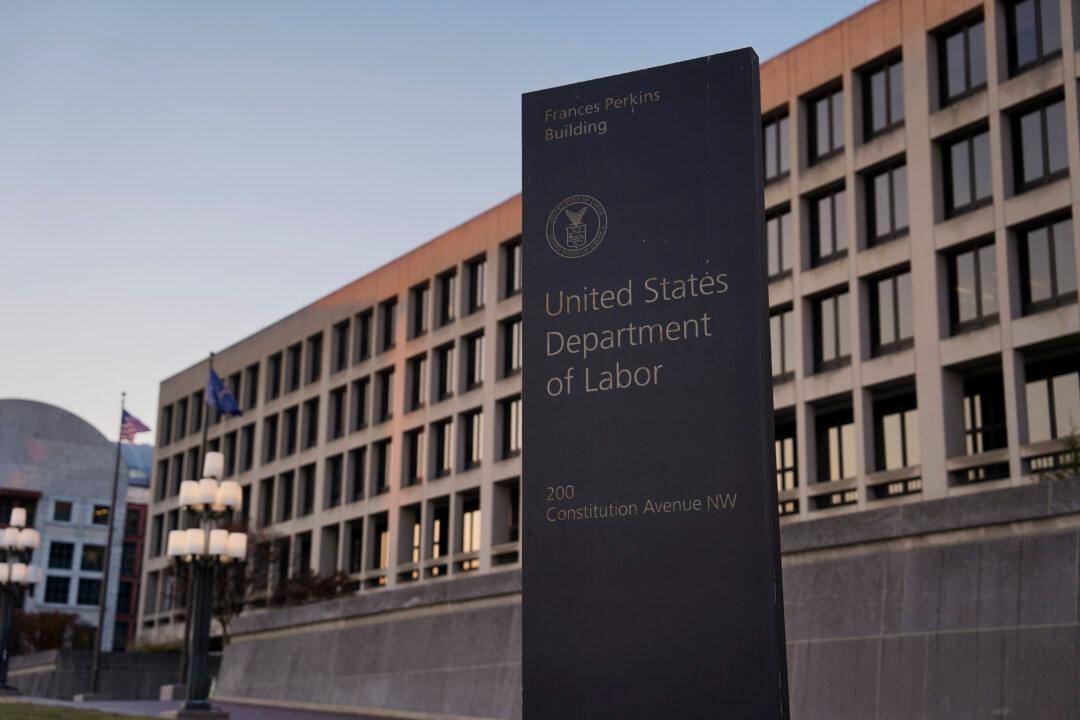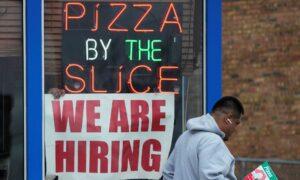U.S. employers added barely more than 100,000 new jobs in November, according to payroll processor ADP, with the number coming in well below market expectations and a fresh sign that the labor market is cooling as recession warnings abound.
Private U.S. employers added just 103,000 new jobs in November, a disappointing figure in the face of consensus estimates on Wall Street that expected 128,000 new positions.
Not only was last month’s job growth lackluster, but October’s figures were revised downward in ADP’s latest report to 106,000 from an initial 113,000.
On the job gains side, the biggest gains were in trade, transportation, and utilities (55,000), followed by education and health services (44,000).
The ‘Boost Is Behind Us’
Leisure and hospitality—the low-wage sector that posted strong job gains during the post-pandemic recovery—lost jobs for the first time in three years, shedding 7,000 positions.Manufacturing led the losses, dropping 15,000 jobs and adding to other data showing that U.S. factories are suffering a slowdown.
The ADP report “joins a chorus of indicators hinting at a cooling labor market,” Michael McDonough, chief economist for financial products at Bloomberg LP, said in a post on X, formerly known as Twitter.
Some of those indicators include job openings falling to their lowest level since March 2021, new orders for U.S.-made goods suffering their sharpest drop in more than three years, and a closely watched factory activity gauge showing that U.S. manufacturing activity contracted in November for the 13th consecutive month.
“Gradual loosening of the labor market continues,” analyst Charlie Bilello said in a post on X.
Also, a key U.S. leading economic indicator from The Conference Board dropped for the 19th consecutive month in October.
“The Conference Board expects elevated inflation, high interest rates, and contracting consumer spending—due to depleting pandemic saving and mandatory student loan repayments—to tip the U.S. economy into a very short recession,” Justyna Zabinska-LaMonica, business cycle indicators senior manager at The Conference Board, said in a statement.
The Conference Board predicts that the U.S. economy will grow by only 0.8 percent in 2024.
The latest data show that the U.S. economy grew at a 5.2 percent annualized rate in the third quarter, a forecast-beating pace that some analysts said looks better on paper than in reality, because when looked at from the income side, the data suggest that momentum has waned and growth is slowing.
Recession Watch
Although the U.S. economy has defied predictions for a recession, recent economic data paint a picture of a looming slowdown, including lackluster growth in consumer spending and a cooling job market.Recent data from October show that 69 percent of U.S. consumers expect a recession over the next 12 months, while a whopping 84 percent of C-suite executives believe that a contraction is inevitable.
Mr. Dimon said geopolitical tensions and the energy transition were prompting governments to ramp up spending, which is inflationary. If a new inflationary spike were to materialize, this would pressure the Federal Reserve to raise interest rates further, which could tip the economy into a downturn.
“Interest rates may go up, and that might lead to recession,” he said.
Mr. Dimon’s warning came as inflation expectations among U.S. consumers saw a sharp rise recently, with the five-year inflation expectation reading being the highest in 22 years.
A majority (59 percent) of U.S. consumers said in a survey published by Bankrate on Dec. 6 that despite what official government data state, they feel that the U.S. economy is currently in a recession.
“I call it a quiet recession because not many people are talking about it, but everyone is feeling it,” Petra Gonzalez, who heads operations at a local deli just outside of Lansing, Michigan, told Bankrate as part of the survey.







